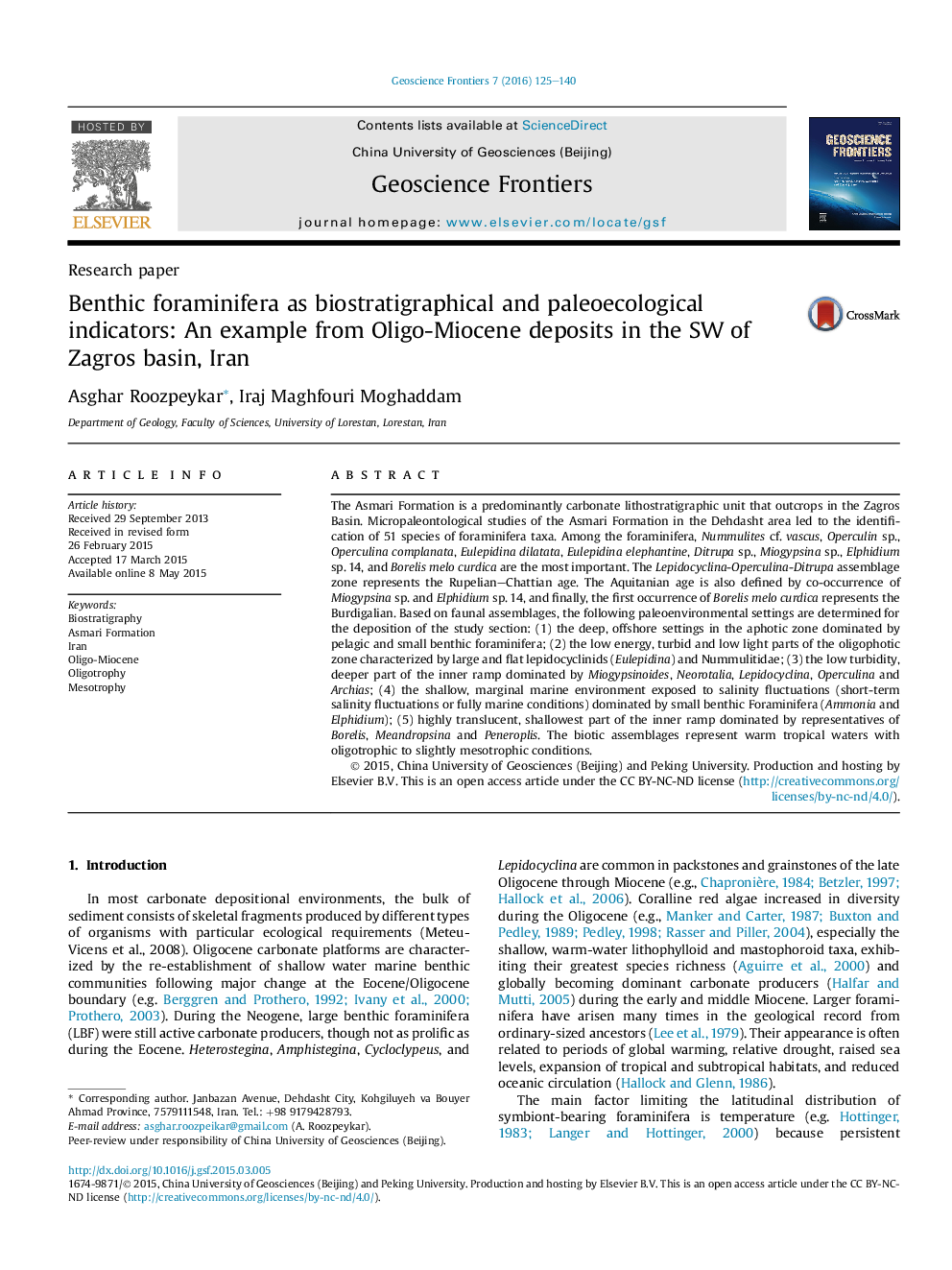| کد مقاله | کد نشریه | سال انتشار | مقاله انگلیسی | نسخه تمام متن |
|---|---|---|---|---|
| 4681530 | 1348855 | 2016 | 16 صفحه PDF | دانلود رایگان |
• Identification of 51 species of foraminifera.
• Oligocene (Rupelian–Chattian)–early Miocene (Aquitanian–Burdigalian) age.
• Warm tropical waters with oligotrophic to slightly mesotrophic conditions.
The Asmari Formation is a predominantly carbonate lithostratigraphic unit that outcrops in the Zagros Basin. Micropaleontological studies of the Asmari Formation in the Dehdasht area led to the identification of 51 species of foraminifera taxa. Among the foraminifera, Nummulites cf. vascus, Operculin sp., Operculina complanata, Eulepidina dilatata, Eulepidina elephantine, Ditrupa sp., Miogypsina sp., Elphidium sp. 14, and Borelis melo curdica are the most important. The Lepidocyclina-Operculina-Ditrupa assemblage zone represents the Rupelian–Chattian age. The Aquitanian age is also defined by co-occurrence of Miogypsina sp. and Elphidium sp. 14, and finally, the first occurrence of Borelis melo curdica represents the Burdigalian. Based on faunal assemblages, the following paleoenvironmental settings are determined for the deposition of the study section: (1) the deep, offshore settings in the aphotic zone dominated by pelagic and small benthic foraminifera; (2) the low energy, turbid and low light parts of the oligophotic zone characterized by large and flat lepidocyclinids (Eulepidina) and Nummulitidae; (3) the low turbidity, deeper part of the inner ramp dominated by Miogypsinoides, Neorotalia, Lepidocyclina, Operculina and Archias; (4) the shallow, marginal marine environment exposed to salinity fluctuations (short-term salinity fluctuations or fully marine conditions) dominated by small benthic Foraminifera (Ammonia and Elphidium); (5) highly translucent, shallowest part of the inner ramp dominated by representatives of Borelis, Meandropsina and Peneroplis. The biotic assemblages represent warm tropical waters with oligotrophic to slightly mesotrophic conditions.
Figure optionsDownload as PowerPoint slide
Journal: Geoscience Frontiers - Volume 7, Issue 1, January 2016, Pages 125–140
